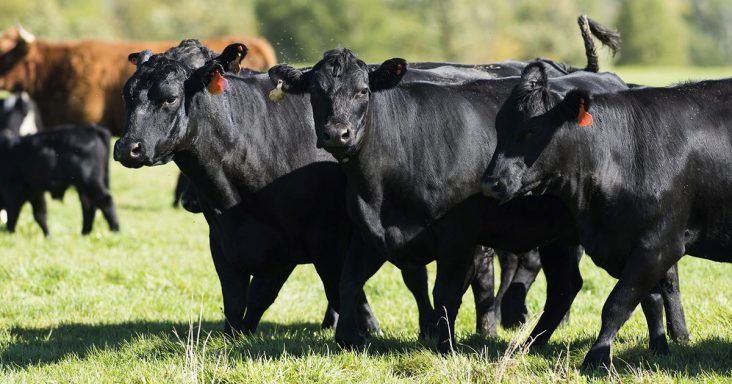Arkansas farmers face 4.5% decline in profitability in 2022
by June 14, 2022 8:11 am 2,173 views

Arkansas farmers are being impacted by a double-edged sword when it comes to inflation. Input costs are spiraling upward, but so are futures market prices in some cases, meaning the crops or livestock they produce are gaining value.
Mark Lambert, director of Commodity Activities and Economics with Arkansas Farm Bureau, told Talk Business and Politics that the state has two types of farmers – livestock and row crop. During the past year, many of the pressures that have jolted the agriculture sector have hit both, Lambert said.
He said that profits would likely take a hit as the year unfolds.
“Farmers and ranchers are faced with higher prices, resulting in a forecasted profit decrease of 4.5% year-over-year. Farm debt is outpacing farm assets, and with farmers facing additional challenges like an interest rate increase, we will likely see farm debt accumulation accelerate,” he said.
Agriculture land values have dropped as well.
“Farm assets of real estate have gradually yielded a 3% return or appreciation, which will likely decrease to a 1% appreciation in 2022. That has forced some investment funds to back away from the purchase of land and reevaluate lease agreements to further compensate for the higher rates to keep producers on the land for the coming years,” he added.
LIVESTOCK
In Q1, livestock prices edged higher. Lower projected calf production and other factors such as exporters like Australia rebuilding herds offered glimmers of hope for U.S. cattle farmers, Lambert said. Slaughter steer prices are up 17.5% in 2022, according to figures released by the United States Department of Agriculture.
U.S. beef exports have been robust this year, as well.
Trade data from March reported record U.S. beef exports totaling 303.7 million pounds, 1.2% above 2021. According to the American Farm Bureau Federation, that is the most significant quantity of beef exported for any month of March. During Q1, the meat trade came in at 845.8 million pounds, 6.2% ahead of 2021. China, South Korea, and Japan continue to lead importers, being the top three destinations for U.S. beef. China posted a record 145.4 million pounds, 61.8% above 2021.
Despite this, cattle futures markets have not risen significantly even though input costs continued an upward trajectory. Other factors such as drought could also impact the cattle industry.
“Stagnant futures prices coupled with rising input prices have created a squeeze on cattle producers to break even where expenses can outpace revenue quickly,” Lambert said.
ROW CROPS
Row crop prices had been in the doldrums for several years, but many are now at a decade high. Input costs, inflation, world conflicts, supply chain issues, and interest rate hikes will continue to be issues that will eat away at farm profits heading into the harvest season, Lambert said.
“The Federal Reserve decided to raise interest rates by .25 points to help combat inflation and tamp down prices for everyone,” he said. “The interest rate will affect long-term debt as mortgage rates depend on the 10-year Treasury note, which raises the borrowing cost. Loan interest accounts for 6% of production expenses in 2022. From 2019 to 2022, excluding dwellings, there has been a 21% increase in interest expenses on real estate. That has a major impact on farmers.”
One input cost that has hit farmers especially hard is the cost of nitrogen. Since 2019 the cost has skyrocketed by 30%. As a result, farmers are expected to shift from input-dependent crops such as corn and plant less input-dependent crops such as soybeans, Lambert said.
“Cotton has been a good crop for a cash flow if the infrastructure is still available, especially with cotton prices hovering over $1 per pound. Soybean and cotton acres are increasing by 7% and 8%, respectively, while rice and corn acres decrease by 2% and 12%. All the decreases in rice and corn stem from an increase in the nitrogen cost to production,” he said.
There had been speculation that the conflict between Ukraine and Russia might cause a spike in commodity prices, but it hasn’t. It has added more volatility to markets, Lambert said. Ukraine and Russia account for 28% of world wheat export and 15% of corn exports. Higher volatility in the wheat market is a cause for uncertainty, forcing a basis to a level of $1.50 to $2 under futures contract prices.
Government subsidies, one of the few lifelines extended to farmers during turbulent economic periods, have also been on the decline in recent years, Lambert said.
“Fewer government payments are also worth noting, as we forecast a 57% reduction in total government payments in the 21-2022 cropping year. These payments sustain agriculture in keeping the food supply for American consumers affordable when the price of production outpaces revenues for farmers and ranchers,” he said.
It’ll be months before Arkansas row crop farmers head to harvest their crops. Two things seem to be sure, Lambert said. Farmers, both livestock and row crops, will likely make less money, and consumers will pay more.
“A higher production cost will soon outpace revenues to farmers and ranchers across the industry, leading to more consolidation and financial hardships for many producers and further increasing the cost to American consumers,” he said.
